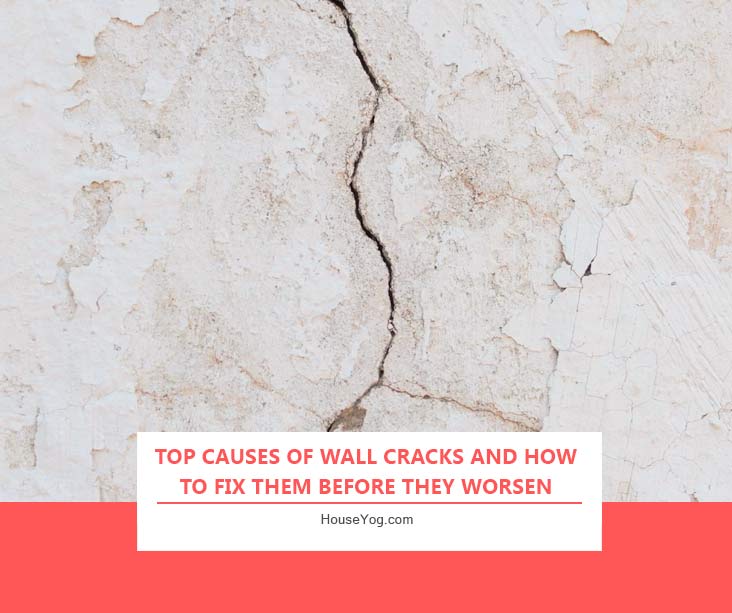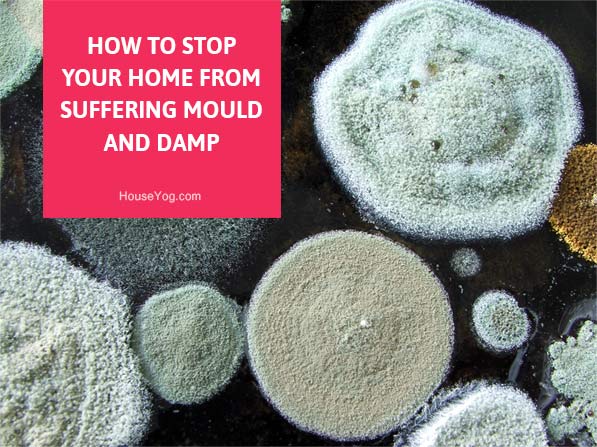Wall cracks are among the most common and worrying issues homeowners face, especially in India, where varying climates, soil types, and construction practices make homes more vulnerable.
A small crack on your wall today might seem harmless, but if ignored, it can turn into a serious structural problem over time. However, not every wall crack is a cause for alarm — some are purely cosmetic, while others can signal deeper foundation or moisture issues.
In this guide, we’ll explore the top causes of wall cracks in Indian homes, how to identify whether they’re superficial or structural, and the most effective ways to repair and prevent them before they worsen.
Understanding Wall Cracks: Structural vs. Superficial
Before you rush to repair a wall crack, it’s crucial to understand what kind of crack you’re dealing with — because not all cracks are equally serious.
Superficial cracks (also called hairline cracks) usually form on plaster or paint surfaces. They’re caused by weather changes, shrinkage, or normal building settlement, and are mostly cosmetic.
In contrast, structural cracks are a sign of deeper problems such as foundation movement, water seepage, or poor construction practices. If ignored, these cracks can weaken your walls and affect your home’s safety and resale value.
How to Identify the Type of Crack
Before you start any repair, it’s essential to know what type of crack you’re dealing with — and how serious it might be.
Some cracks are purely cosmetic, while others can indicate deeper structural issues that need professional attention.
1. Common Types of Wall Cracks
- Hairline cracks (<1 mm): Usually surface-level, caused by paint shrinkage, plaster drying, or normal settlement.
- Medium cracks (1–5 mm): May appear due to moisture seepage or minor movement — inspect further before repair.
- Wide cracks (>5 mm): Could be structural; seek advice from a civil or structural engineer.
- Diagonal or zig-zag cracks: Often point to foundation movement or stress.
- Vertical cracks near doors or windows: Usually caused by temperature changes or settlement.
Identifying the correct type helps you decide whether repainting is needed or a professional check-up is needed.
2. Quick Reference: Type, Cause, and Recommended Action
Here’s a quick reference guide to help you spot the crack, identify the likely cause and prepare for the appropriate course of action:
| Crack Pattern / Location | Likely Cause | Recommended Action |
| Fine cracks in plaster | Shrinkage or paint aging | Replaster and repaint |
| Cracks wider than 2 mm | Structural movement | Consult a civil or structural engineer |
| Cracks near ceiling corners | Beam-slab stress or load transfer | Schedule a structural inspection |
| Cracks with damp patches | Water seepage or leakage | Waterproofing and repainting |
| Horizontal or stair-step cracks | Foundation settlement | Immediate structural inspection |
Why It Matters
Understanding both the type and severity of wall cracks early helps prevent minor surface issues from turning into costly structural repairs.
A careful inspection today can save you from future dampness, wall bulging, or even foundation damage — ensuring your home stays safe and strong for years.
Common Causes of Wall Cracks in Indian Homes
Wall cracks can develop due to a mix of natural factors, poor construction practices, and climatic conditions. In India, where soil type and weather vary drastically across regions, understanding the cause is the first step toward the right wall crack repair solution.
Below are the most common causes of wall cracks in Indian homes, and what you can do to fix them before they worsen.
1. Foundation Settlement or Soil Movement
When the soil beneath your home expands, contracts, or shifts unevenly, it exerts pressure on the foundation — leading to vertical or diagonal cracks along the walls.
Common in: Areas with clay or black cotton soil.
Fix: Conduct a foundation inspection, soil stabilisation, or grouting if necessary.
Why It Matters: If left untreated, foundation cracks can lead to structural instability, tilted floors, or uneven door frames, which are expensive to repair later.
2. Moisture Seepage and Dampness
Moisture infiltration is among the leading causes of wall damage in Indian homes, especially during monsoon months. Persistent dampness weakens plaster and expands wall materials, causing visible cracks and stains.
Signs: Peeling paint, white powdery deposits (efflorescence), musty odour.
Fix: Identify and seal leakage sources (terrace, plumbing, or exterior wall), apply waterproofing compound, and replaster the damaged area.
Tentative Repair Cost: ₹40–₹80 per sq ft (varies by location and damage level). Extensive waterproofing can cost ₹100–₹150 per sq ft.
Why It Matters: Moisture-related cracks can spread quickly, invite mold, and weaken your wall structure from within if ignored.
3. Poor-Quality Construction Materials
Using substandard cement, sand, or aggregate often results in shrinkage cracks and weak bonding between plaster layers.
Fix: Remove damaged plaster, apply a fresh 1:4 cement-sand mix, and ensure proper curing for at least 7 days.
Why It Matters: Low-grade materials may save money initially, but can double your long-term wall repair costs and reduce your home’s durability.
4. Thermal Expansion and Contraction
In India’s hot and humid climate, wall materials like brick and concrete expand in heat and contract as temperatures drop. This daily stress can lead to fine cracks over time.
Fix: Use expansion joints for long wall stretches, and apply flexible, weather-resistant paints or crack-resistant plaster.
Tip: Choose high-quality exterior paints with thermal resistance to prevent future cracks.
Why It Matters: Proper thermal management keeps your walls stable year-round and reduces repainting frequency.
5. Shrinkage During Plaster Drying
Improper curing after plastering is another common reason for hairline wall cracks in newly built homes. When plaster dries too quickly, it leaves fine surface gaps.
Fix: Cure plastered surfaces for at least 7–10 days. For existing cracks, fill gaps with acrylic crack fillers or wall putty.
Approx. Cost: ₹20–₹40 per running foot for minor surface repairs.
Why It Matters: Proper curing during construction prevents future repairs — one of the easiest low-cost wall protection tips.
6. Vibrations from Nearby Construction or Traffic
Homes located near heavy construction sites, metro projects, or busy roads often face micro-vibrations that loosen mortar joints over time.
Fix: Strengthen affected areas with wire mesh and polymer mortar to restore wall integrity.
Why It Matters: Early intervention prevents cracks from spreading through structural walls and saves costly future repairs.
7. Ageing and Natural Wear
All homes settle naturally over time, especially those over 10–15 years old. Minor cracks are often due to temperature changes and normal ageing of materials.
Fix: Replaster or repaint after filling cracks with epoxy filler or wall putty. Inspect walls yearly for early signs of moisture or expansion.
Pro Tip: Schedule an annual wall health check-up before monsoon season to catch and fix cracks early.
Why It Matters: Preventive maintenance helps preserve both your home’s strength and aesthetic appeal, avoiding larger repair projects later.
Whether caused by foundation issues or weathering, cracks in your walls should never be ignored. Timely identification and repair not only protect your home’s structure but also maintain its visual appeal and resale value.
If you notice deep or recurring cracks, consult a civil engineer or structural expert for a professional inspection before attempting DIY fixes.
How to Repair Wall Cracks (Step-by-Step Overview)
Once you’ve identified the type of crack and its cause, you can decide how to fix it.
Here’s a simple, step-by-step approach most professionals in India follow for wall crack repair:
- Inspect and Classify – Identify the crack’s width, direction, and underlying cause (e.g., settlement, moisture, or thermal movement).
- Clean the Crack Area – Remove loose plaster, dust, or paint flakes using a wire brush. This ensures the filler adheres properly.
- Apply a Suitable Crack Filler –
- For small or hairline cracks, use acrylic or polymer-based fillers.
- For deeper cracks, use epoxy resin or cement mortar for better bonding and strength.
- Replaster if Required – For cracks that extend deep into the wall, reapply a 1:4 cement–sand plaster mix after filling.
- Finish with Repainting or Texturing – Once the surface is dry, use a high-quality, weather-proof exterior paint or textured finish for long-lasting protection.
Tentative Wall Crack Repair Cost in India
Actual wall crack repair costs can vary depending on damage severity, local labour rates, and the materials used. Here’s the quick reference to help you get some idea before you talk to a repair contractor in India.
| Type of Crack | Estimated Cost | Typical Work Included |
| Hairline cracks | ₹20–₹40 per running foot | Surface cleaning, filler, repainting |
| Medium cracks (with minor replastering) | ₹60–₹120 per sq ft | Crack cutting, filler, replastering, and painting |
| Structural or foundation-level cracks | ₹300+ per sq ft | Grouting, strengthening, structural reinforcement |
Note: These are indicative costs for awareness only.
Always seek professional advice from a civil engineer or licensed contractor before starting repair work.
Preventive Measures to Avoid Future Wall Cracks
Prevention is always better — and cheaper — than repair. Regular maintenance and smart construction practices can help you avoid wall cracks and keep your home structurally sound for years.
Here are some simple but effective preventive measures:
- Ensure proper waterproofing during construction — especially for bathrooms, terraces, and exterior walls.
- Use high-quality cement and sand, ideally tested and sourced from reputed suppliers.
- Cure plaster and concrete adequately (at least 7–10 days) to prevent shrinkage cracks.
- Install expansion joints in long walls or large buildings to absorb temperature-related movement.
- Maintain good drainage around the foundation to avoid soil movement and water seepage.
- Inspect your home annually, particularly before and after the monsoon, to spot and fix small cracks early.
If you’re planning a home renovation or a new construction, check out our construction cost estimation calculator to plan your materials, finish quality, and budget more effectively.
When to Call a Professional to Repair
Not every wall crack needs expert help — but some are clear warning signs that your home may need professional attention.
You should consult an architect or structural engineer if:
- The crack is wider than 5 mm
- It runs diagonally or extends through multiple walls
- Doors or windows are misaligned or jammed
- You notice uneven flooring, bulging, or sagging walls
A qualified professional can determine whether the problem is cosmetic or structural and recommend the right course of action, from targeted repairs to strengthening your foundation.
Need expert advice? You can also connect with our experts to explore design, renovation, or structural improvement options that make your home stronger and more durable.
FAQs: Wall Crack Repair and Causes in India
A: Wall cracks in new homes are usually caused by plaster shrinkage, improper curing, rapid temperature changes, or settling of the structure. These are often cosmetic initially, but it’s important to monitor them for signs of deeper structural issues. For guidance on fixing these cracks, check our Top Causes of Wall Cracks and How to Fix Them guide.
A: The cost of wall crack repair in India may typically range between ₹20 to ₹400 per sq. ft, depending on the crack type, severity, and repair method. Hairline cracks are cheaper to fix, while structural or foundation-related cracks cost significantly more.
A: Not all wall cracks are dangerous. Hairline cracks are usually cosmetic and don’t compromise structural safety. However, wide, diagonal, horizontal, or recurring cracks may indicate serious structural problems and require professional assessment to prevent future damage.
A: Small hairline or superficial cracks can be repaired using acrylic or polymer-based fillers. However, structural cracks, cracks caused by water seepage, or foundation issues require professional intervention from a civil engineer or structural contractor. Learn more in our step-by-step wall crack repair guide.
A: Preventive measures include proper plaster curing, high-quality materials, waterproofing, installing expansion joints, and annual wall inspections, especially before and after the monsoon season. Regular maintenance can significantly reduce the chances of cracks worsening over time.
A: Painting over a wall crack without repairing it first will only make the crack reappear. Always fill cracks with the right filler, allow curing, and apply primer before painting for a long-lasting finish. For waterproofed walls, read our waterproofing guide.
A: For superficial cracks, acrylic or polymer-based fillers work well. Deep or structural cracks require cement-based filler or epoxy resins. Always choose products suitable for the local climate and wall type.
A: Inspect walls at least once a year, ideally before the monsoon and after the summer heat, to catch early signs of cracking, moisture damage, or structural settlement. Early detection can save major repair costs later.
A: Hairline cracks (<1 mm) are usually superficial, caused by plaster shrinkage or paint ageing. Cracks wider than 5 mm, diagonal cracks, stair-step patterns, or those near door/window frames may indicate structural issues. Always consult a civil engineer if in doubt.
A: Contact a professional if cracks are wide, diagonal, recurring, or cause doors and windows to jam. Structural issues like foundation settlement, beam stress, or wall bulging require expert assessment to prevent further damage and ensure safety.
Over to You
Wall cracks may look minor, but they can lead to serious structural issues if ignored. The key to protecting your home is early detection, proper repair, and preventive maintenance.
Key Takeaways:
- Wall cracks are common, but some can signal deeper structural problems.
- Always identify whether a crack is superficial or structural before deciding how to repair it.
- Use quality materials, proper curing, and effective waterproofing for durable results.
- Consult a qualified engineer or architect if the cracks are wide, diagonal, or keep recurring.
If you’re planning to renovate or build a new home, consult our expert architects and civil engineers to get a custom construction estimate and professional design advice that helps prevent such issues right from the start.
Your home deserves expert care — and at Houseyog, we’re here to help you make it stronger, safer, and more beautiful.
For more expert guides, check out:
- Construction Cost per Square Foot in India
- Rainwater Harvesting Cost in India
- Waterproofing Cost Guide for Indian Homes






